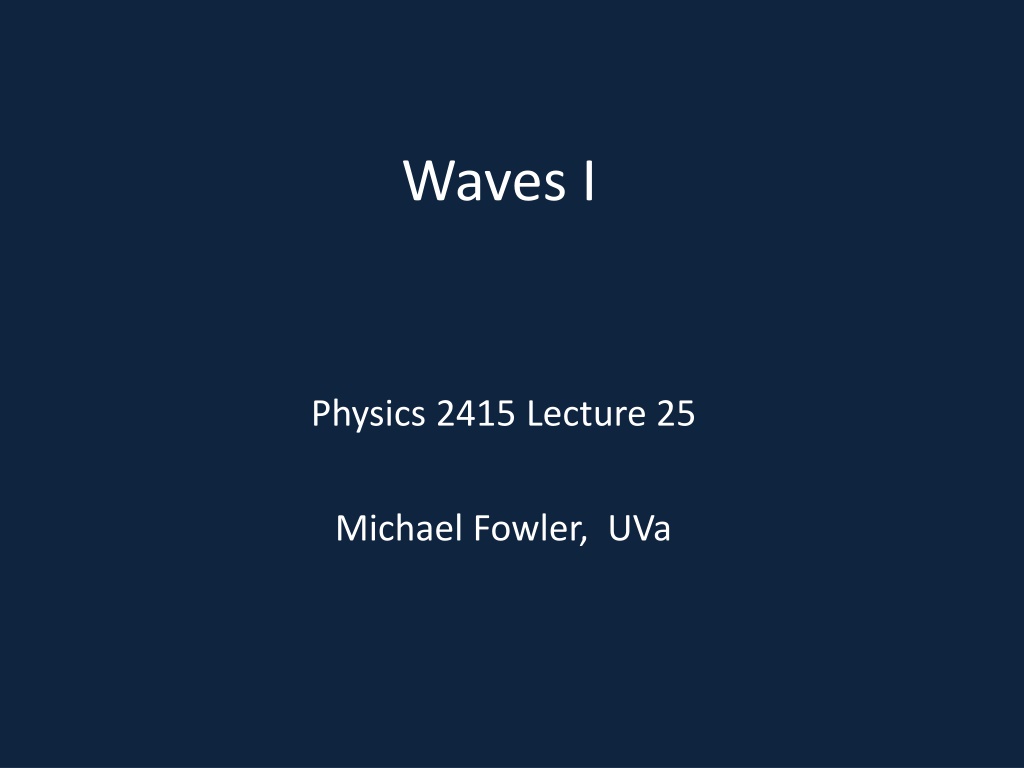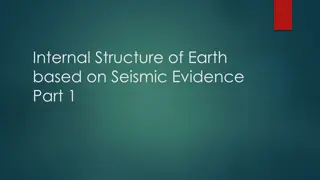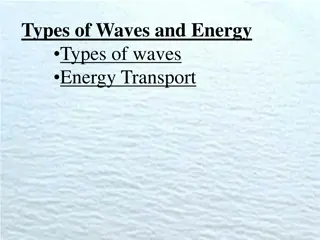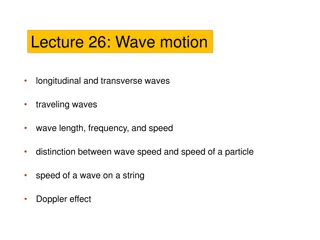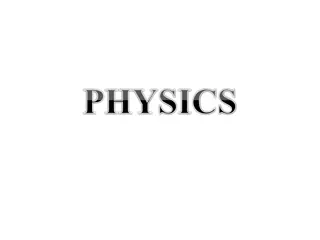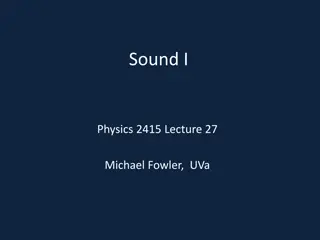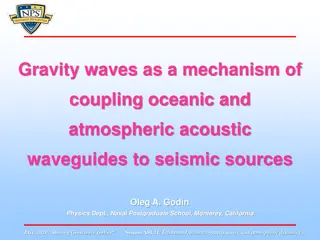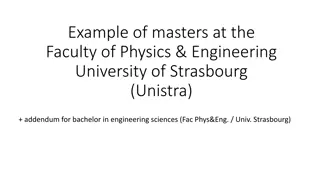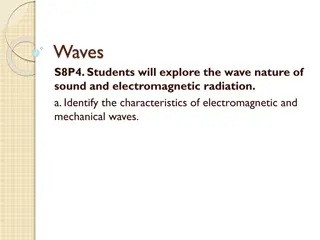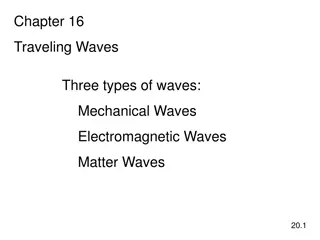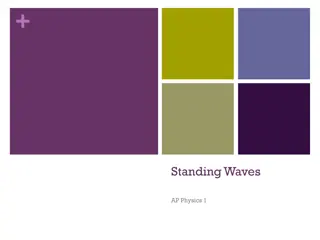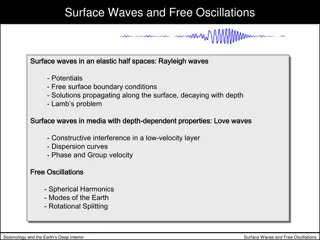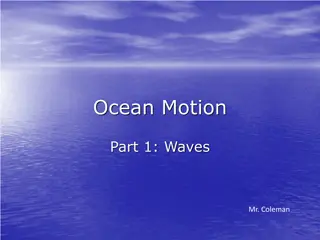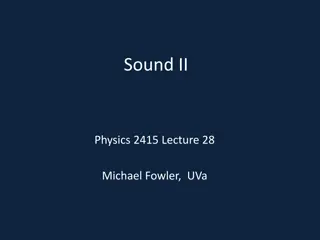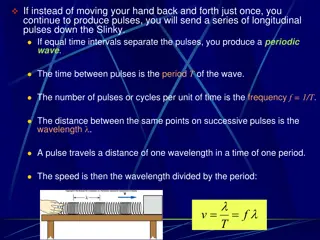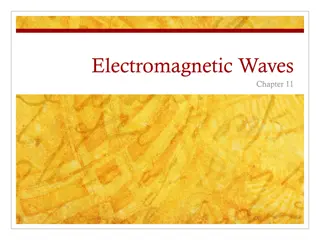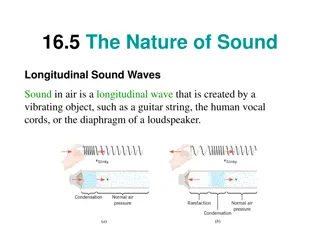Waves in Physics: Dimensions, Types, and Analysis
Explore the dimensions of waves in physics, including transverse and longitudinal types, wave velocity calculations, harmonic waves, dimensional analysis examples, and simulations on strings. Learn how dimensional analysis helps in understanding wave properties and relationships in various scenarios.
Download Presentation

Please find below an Image/Link to download the presentation.
The content on the website is provided AS IS for your information and personal use only. It may not be sold, licensed, or shared on other websites without obtaining consent from the author. Download presentation by click this link. If you encounter any issues during the download, it is possible that the publisher has removed the file from their server.
E N D
Presentation Transcript
Waves I Physics 2415 Lecture 25 Michael Fowler, UVa
Todays Topics Dimensions Wave types: transverse and longitudinal Wave velocity using dimensions Harmonic waves
Dimensions There are three fundamental units in mechanics: those of mass, length and time. We denote the dimensions of these units by M, L and T. Acceleration has dimensions LT-2(as in m/sec2, or mph per second same for any unit system). Write this [a] = LT-2. From F = ma, [F] = [ma] so [F] = MLT-2.
Using Dimensions Example: period of a simple pendulum. What can it depend on? [g] = LT-2, [m] = m, [ ] = L. What combination of these variables has dimension just T? No place to include m, and we need to combine the others to eliminate L: [g/ ] = T-2, so is the only possible choice. Dimensional analysis can t (of course) give dimensionless factors like 2 . / g
Dimensional Analysis: Mass on Spring From F = -kx, [k] = [F]/[x] = MLT-2/L = MT-2. How does the period of oscillation depend on the spring constant k? The period has dimension T, the only variables we have are k and m, the only combination that gives dimension T is , so we conclude that T . Spring s force = F kx m Extension x / m k 1/ k .
Waves on a String A simulation from the University of Colorado
Transverse and Longitudinal Waves The waves we ve looked at on a taut string are transverse waves: notice the particles of string move up and down, perpendicular to the direction of progress of the wave. In a longitudinal wave, the particle motion is back and forth along the direction of the wave: an example is a sound wave in air.
Harmonic Waves A simple harmonic wave has sinusoidal form: Amplitude A Wavelength For a string along the x-axis, this is local displacement in y-direction at some instant. For a sound wave traveling in the x-direction, this is local x-displacement at some instant.
Wave Velocity for String The wave velocity depends on string tension T, a force, having dimensions MLT-2, and its mass per unit length , dimensions ML-1. What combination of MLT-2 and ML-1 has dimensions of velocity, LT-1? We get rid of M by dividing one by the other, and find [T/ ] = L2T-2 : In fact, is exactly correct! This is partly luck there could be a dimensionless factor, like the 2 for a pendulum. = T / v
Sound Wave Velocity in Air Sound waves in air are pressure waves. The obvious variables for dimensional analysis are the pressure [P] = [force/area] = MLT-2/L2 = ML-1T-2 and density [ ] = [mass/vol] = ML-3. Clearly has the right dimensions, but detailed analysis proves = P / = / / v P P where = 1.4. This can also be written in terms of the bulk modulus , but that differentiation must be adiabatic local heat generated by sound wave pressure has no time to spread, this isn t isothermal. ( ) = / B P
Traveling Wave Experimentally, a pulse traveling down a string under tension maintains its shape: y x Mathematically, this means the perpendicular displacement y stays the same function of x, but with an origin moving at velocity v: ( ) , y f x t = vt ( ) = f x vt So the white curve is the physical position of the string at time zero, the red curve is its position at later time t.
Traveling Harmonic Wave A sine wave of wavelength , amplitude A, traveling at velocity v has displacement 2 ( ) = x vt sin y A y 0 x vt
Harmonic Wave Notation A sine wave of wavelength , amplitude A, traveling at velocity v has displacement ( 2 ( ) = x vt sin y A ) = 2 / = This is usually written , where the wave number and . As the wave is passing, a single particle of string has simple harmonic motion with frequency radians/sec, or f = /2 Hz. Note that v = f sin y A kx t = vk k
